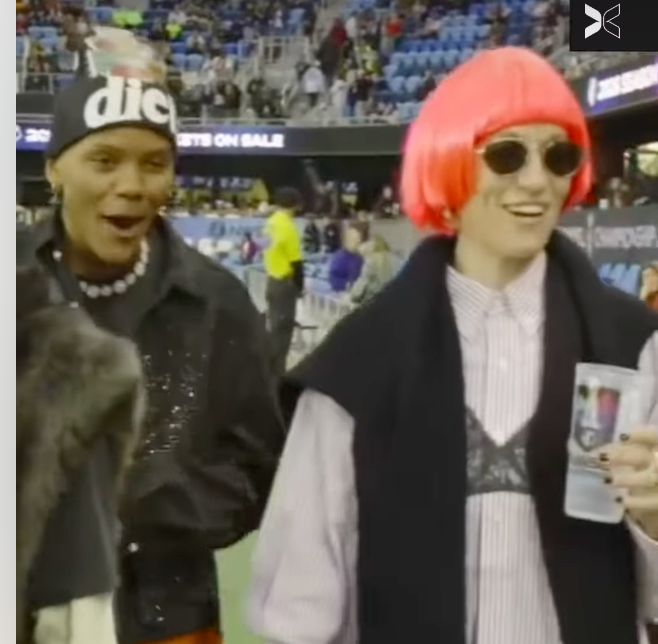According to Tuff Stuff sports memorabilia magazine, the most-popular sports collectible is the trading card. The second-most popular type of collectible is the autograph of a sports star. It’s so popular that Pete Rose, baseball’s all-time hit king, went to jail not for gambling (as you might suspect), but for evading taxes on his six-figure income from sports shows. At shows, he would autograph merchandise for up to $100 per signature.
“Sports autographs are close to a half-billion dollar a year business,” notes Brandon Steiner, president of Steiner Sports, a memorabilia firm.
In 1993, Nabisco combined cards and autographs in what would become the mother-of-all sports collectible promotions. Conceived by Mike Fetchko, then president of International Sports Marketing, Nabisco’s All-Star Autographs program was a self-liquidating promotion that gave away baseball cards autographed by members of the newly created Major League Baseball Alumni Association. (ISM just happened to own the marketing rights to the MLBAA.) Fetchko took the idea to Doug Conant, Nabisco’s VP-integrated marketing.
“He loved the idea from the start as a brand portfolio builder for cookies and crackers,” Fetchko recalls. “We knew we had a good idea; with Doug’s help it became a great idea.”
The promotion was extremely easy to understand: mail-in two proofs of purchase from participating Nabisco Brands (Oreos, Chips Ahoy, Wheat Thins and Ritz Crackers), along with $5 and get your pick of cards from the lineup of players. It launched via a full-page free-standing insert that ran on June 27 and July 18, 1993.
“The unusual promotion is expected to generate two months of continuous supermarket end-aisle displays for featured [Nabisco] products, as well as encourage lobby displays and rotating secondary displays throughout the eight-week time frame,” noted an article in the May/June 1993 edition of the company magazine.
In hindsight, there were two aspects of this promotion that were amazing: the autographed cards turned out to be outstanding investments — the average resale today is over six times the $5 cost; and Nabisco not only self-liquidated the cost of the cards and autographs, it made enough from the mail-ins to pay for the two FSIs.
The folks at ISM contracted with each of the retired Hall of Famers from the MLBAA to autograph cards for $2 apiece. The fee was a fraction of what the players usually got at a sports card show — but Nabisco requested 90,000 cards per player and 20,000 signed premiums. A guaranteed payday of $220K per player made a lasting impression!
“I remember this song going through my head,” laughs Chicago Cub Hall of Fame player Ernie Banks, “Keep signing, keep signing, knowing you can always count on me, for sure, that’s what friends are for.”
Nabisco and ISM saved money by removing all Major League Baseball team logos from photos used on the cards, thereby avoiding a 15% royalty fee, as well as a sponsorship fee of around $250,000 a year. Such guerilla marketing gives sports leagues a fit, but the lack of team logos had no effect on sales at the time or the collectible value today. In truth, these same cards without autographs, but with team logos would sell for less than $1 each today.
In addition to the FSIs, Nabisco publicized the offer on 80 million packages of cookies and crackers. It was then featured heavily in an 80-city tour staged at major and minor league ballparks. The tour featured many of the players and provided an opportunity to merchandise the mail-in. Nabisco’s sales force could even access players used in the promotion for sales calls on their major accounts.
“Can you imagine the reaction of a Jewel (Chicago) buyer when you bring in Mr. Cub, Ernie Banks, to make the pitch? It was an absolute home run,” laughs Fetchko.
For the trade, Nabisco offered dealers autographed balls, bats and framed photos for using displays of escalating size. It added different, but equally valuable players than those in the card series for some premiums, featuring former stars like Rollie Fingers, Harmon Killebrew and Tony Oliva.
Credit Nabisco for continuing the promotion despite an unforeseen disaster: Don Drysdale, the Dodger pitching great, was in Montreal on a broadcast assignment on July 3, 1993, when he passed away from a heart attack. He was less than three weeks shy of his 57th birthday. FSIs featuring his autographed card were already printed for a July 15 newspaper insertion. Nabisco was in the awkward position of promoting the autographed card of a star whose body was barely cold in the ground.
“The fulfillment agency called me after the second FSI ran and said we were being deluged with requests for the Drysdale card,” Fetchko recalls. “A whole lot of collectors back then were buying cookies and crackers to stock up on that one.”
Nabisco avoided being overrun by fans of a particular player by asking consumers to list player cards in order of preference. It didn’t guarantee that every mail-in would receive a first choice of player. This tactic gave the company an out for card inventory on players who were left after the top choices ran out.
By the promotion’s second year, Nabisco reduced the number of player cards offered from six to four. The 1994 line-up proved, if there ever was any doubt, that Nabisco’s efforts on this promotion weren’t just targeted to kids, because three quarters of the players used had retired 18 years or more earlier, well before the memory of the typical “tweenage” collector. The immortal Duke Snider, for example, had been gone from the league for 30 years by the time his card was offered, but he still generated a huge response.
Each card was accompanied by a certificate of authenticity that verified that the card contained an authentic signature from the player depicted. This final stroke by Nabisco was no idle gesture, for the sports memorabilia field was plagued by counterfeit autographs. One of the reasons why the cards from this promotion have increased so much in value is that consumers believe in the integrity of Nabisco.
“Brand is everything,” Steiner says. “You have to have the credibility and the brands behind those names.”
Mike Fetchko can be reached at mfetchko@141worldwide.com. Rod Taylor is senior VP of sports and promotion, CoActive Marketing; he can be reached at rtaylor@getcoactive.com
THE BOYS OF NABISCO
Nabisco’s All-Star Autograph promotion was amazing on a number of fronts, not the least of which was the quality of player they signed up to participate. Here’s a list of the stars they used, their primary team, and the year they entered baseball’s Hall of Fame:
| 1993 | 1994 |
|---|---|
| Ernie Banks, Chicago Cubs, 1977 Don Drysdale, Los Angeles Dodgers, 1984 Jim “Catfish” Hunter, Oakland Athletics, 1987 Phil Niekro, Atlanta Braves 1997 Brooks Robinson, Baltimore Orioles, 1983 |
Bob Gibson, St. Louis Cardinals, 1981 Jim Palmer, Baltimore Orioles, 1990 Frank Robinson, Cincinnati Reds, 1982 Duke Snider, Brooklyn Dodgers, 1980 Willie Stargell, Pittsburgh Pirates, 1988 |
Nabisco’s lineup of stars was so impressive in fact, that three of the six players they used in the first series (Ernie Banks, Bob Gibson and Brooks Robinson) would later be featured in an even more exclusive baseball group: Major League Baseball’s All-Century Team by MasterCard.



